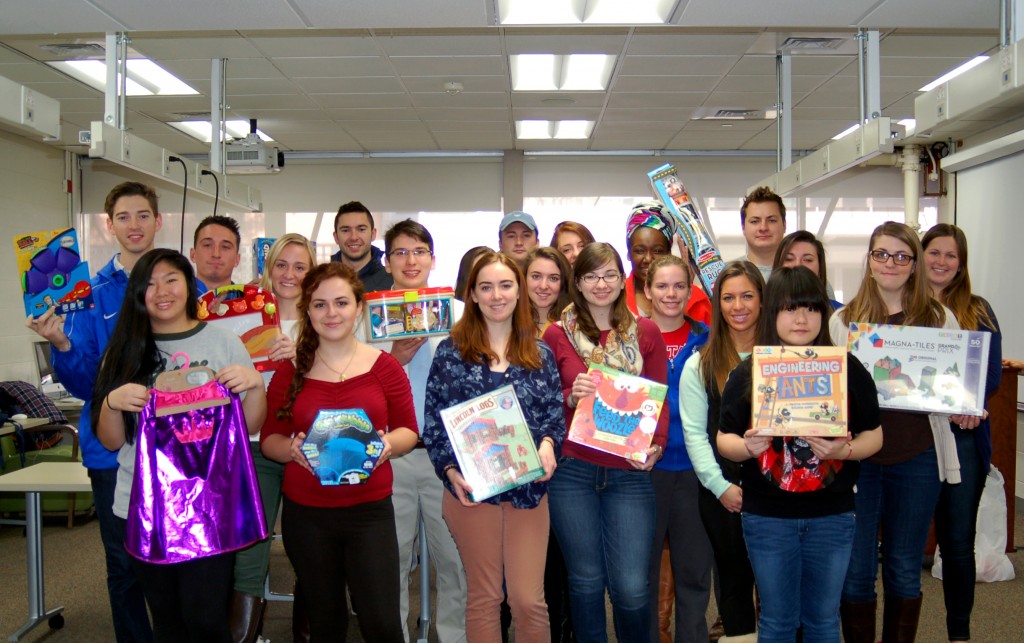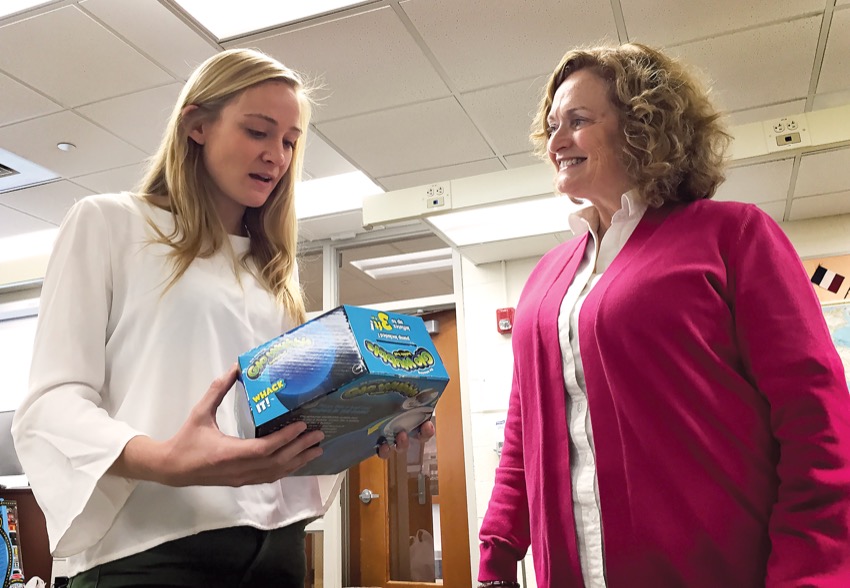Good toys, bad toys

Adults who are making a child’s gift list this holiday season can get some help checking it twice courtesy of a Wheaton education class.
Students in Professor Vicki Bartolini’s “Issues in Early Care and Education” course have spent the fall semester doing extensive research to identify toys of value and toys to avoid for the annual Toy Selection Guide published by the national advocacy group Teachers Resisting Unhealthy Children’s Entertainment (TRUCE). Bartolini serves on the TRUCE steering committee (along with Wheaton alumna Blakely Fetridge Bundy ’66).
The toy guide, which is one of a number of research-based resources TRUCE provides for families and educators, had not been produced for several years, but the organization felt it was time for an update—particularly as “screens” (smartphones, tablet computers, video games and the like) compete more and more for children’s free time.
“I felt this was a great opportunity for students to apply their research to something families and educators could use,” Bartolini said. “Over 70 percent of young children, birth through school age, are in some kind of early childhood setting the first few years of their lives. Some argue that play is disappearing from children’s lives.”
In addition to class discussions and readings about the role of play, the class visited early childhood centers in the area, including Wheaton’s Elisabeth Amen Nursery School, and interviewed parents and educators. They built a list of criteria for good and bad toys, then visited stores and looked at online vendors to come up with specific recommendations.
The TRUCE steering committee reviewed the students’ selections and voted on them; more than three-quarters of their choices made the guide.
For Jeremy Zak ’16, a biochemistry major and education minor, toys that promote violence are top on the naughty list.
“Society is obsessed with violence, and these toys offer little to no benefit for young children in developing their ability to think rationally or peacefully,” he said. “It becomes a norm for adults to have guns and makes violence become a part of life, which it shouldn’t be. I would rather see children engage in exploration or inquisitive play rather than mimic warfare.”
His favorite high-value toy: A board game called Engineering Ants.
“It tasks the children with problem solving and thinking on their feet, which are very important lessons all children should learn, especially as they become more dependent on technology,” Zak said.

The guide, which is available on the TRUCE website, breaks toys of value down into categories: construction, creative arts, active play, pretending and teamwork. Along with general tips for choosing good toys, the guide has a section titled “Toys and Trends to Avoid,” which includes items that promote consumerism and violence or make sexiness the focus of play, as a few examples.
Georgia Crane ’16, a double major in psychology and early childhood education, said she was surprised to find so many toys in the market that had very limited use or required little to no creativity.
“My favorite high-value toy is the Magrific building set. These magnetic blocks are really fun to play with. I do a lot of babysitting at home, and these are always a hit with the kids, and they also keep me entertained,” Crane said.
She is not a fan of toys that rely heavily on electronics, such as the electronic banking version of Monopoly.
“Growing up, the adding and counting are what made the game exciting. Now that there is technology doing it for you, it really takes away from the game,” she said.
Alisha Flaxman ’17 recalls building a fort out of pillows and blankets as a kid and said her favorite toy is a modular fort-building kit that encourages both active play and creativity. But she also found far more toys to avoid than toys of value when her team went shopping.
“The girls’ toys were very sexualized, already at young ages, which I found really disappointing. There were already make-up toys for little girls and a little salon kit for girls,” said Flaxman, a double major in sociology and early childhood education. “The only toys that were directed at boys were LEGOs, weapon toys and commercialized toys from TV shows like ‘Batman’ and ‘Teenage Mutant Ninja Turtles.’”
In addition to the TRUCE Toy Guide, the student teams are each publishing their own guides, which will be available online and distributed to local childcare centers.
“The toy guide project is a great example of what I call ‘applied scholarship,’” Bartolini said. “The students’ work is for the public good and will be used to contribute to society.”